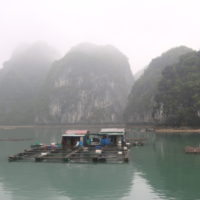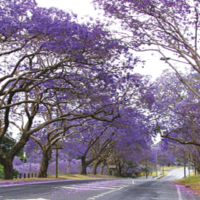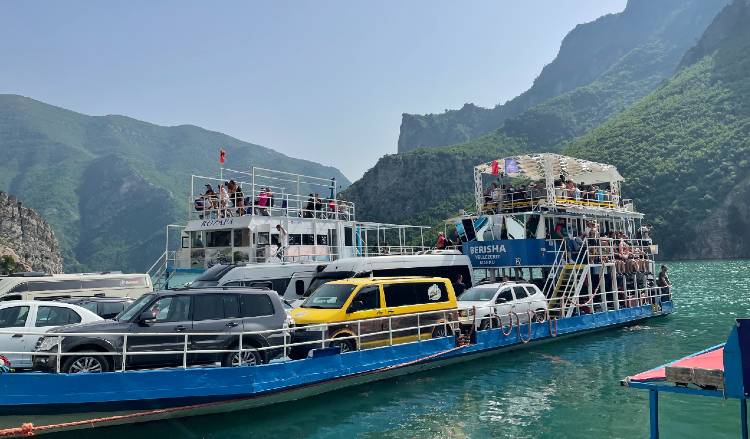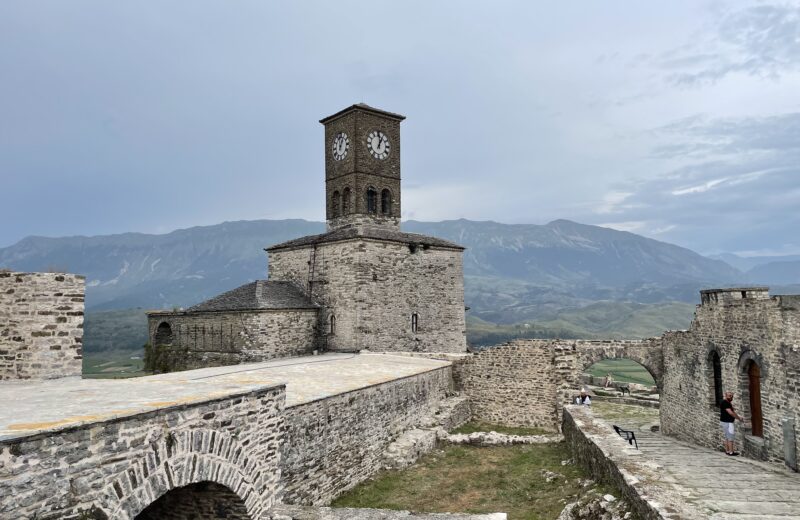Berat is picturesque. And old. It also boasts of a UNESCO World Heritage status and the nickname of City with 1000 Windows.
Located in the central part of Albania (100km from the capital Tirana), the population of Berat is a little over thirty-five thousand and is well connected to other popular spots around the country. It has one of the best-preserved Ottoman architectures in the region.
In every sense, what truly makes Berat special are its traditional Balkan- style houses climbing up the side of a hill atop which sits the 13th century Berat Castle. These houses, belonging to the late 18th and early 19th centuries, typically have two floors, roofs covered with red ceramic tiles and large wooden windows which, because of the steepness of the hill and close construction of the houses, appear to be stacked one over the other.
To me, Berat is one of the most beautiful places in Albania and the country’s main cultural centre. Everything, from the stunning bridge across River Osumi that unites two hillside neighborhoods, the castle, ancient churches, cobbled streets, mosques and food – everything together made Berat a trip to remember.
As it turns out, City of 1000 Windows, is actually a mistranslation from Albanian to English.
Kalaja e Beratit or Berat Castle
Typical of any European country, Albania too has a giant fortress on top of a hill. And in keeping with the modern times, part of the fortress is converted into hotels, restaurants and souvenir shops. It was here I stayed and had the panoramic views of the valley and mountains as a bonus. The walk to the top is steep (but you can easily get a taxi) and once inside, I felt as though I’d walked into a different world. Unlike the ruins one is accustomed to associate castles with, this one was a living, functioning entity. It was unreal.
The fortress encircled by stone walls is a magnificent sight. The buildings here as old as the castle itself and due to their characteristic architecture are preserved as cultural monuments. When it was built, there were more than twenty churches and mosques, most of which were damaged over the years. The ruins of the 15th century Red Mosque and White Mosque and the famed Holy Trinity church can both be found within the castle grounds.
The houses are located on one side of the castle, looking out into the river and the city below.
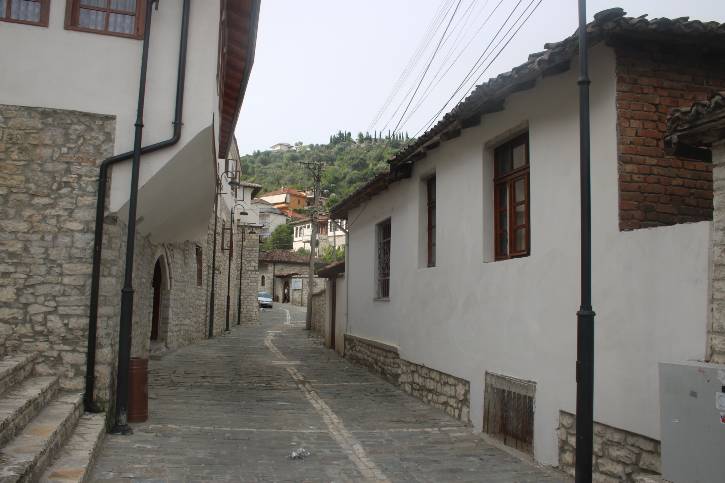
My exploration of the castle grounds led me to unexpected beauties – the bust of Constantine the Great, the Holy Trinity Church and the Red Mosque and an occasional group of kids kicking a football. Women sold lace and embroidered tablecloths from makeshift tables outside their houses tucked into stones while horses playfully neighed when visitors stopped by.
Soon enough I ended up at the Onufri Iconographic Museum located inside the Church of the Dormition of St Mary. This museum is named after the master of iconography from the 16th century – Onufri and contains an excellent collection of Byzantine art.
Of course, I did get lost every now and then but that was expected of wandering through its stunning alleyways. In the evening, when watching the sun go down from atop the castle walls it occurred to me that the pine forests above the city added to the grandeur of the city.
Mangalem, Gorica and legend of the windows
Mangalem, the heart of Berat is located beneath the Berat castle while Gorica lies on the other side of Osumi River – the two neighbourhoods connected by Gorica Bridge. Mangalem is predominantly Muslim, while Gorica is predominantly an Orthodox quarter, although these days there is no difference between the two, and both make up the old town of Berat.
For this reason alone, Berat is also renowned as an example of the national belief in coexistence amongst its religious communities. Mosques and Orthodox churches stand within earshot of one another.

For a small city, Berat has some truly magnificent mosques, some active (on the Mangalem side of the river), such as the King Mosque (Sultan’s Mosque), the steely-domed Lead Mosque, and the recently restored 1820s Bachelor’s Mosque, located on the main cobblestone streets of the riverside. I walked the narrow streets of old white stone houses with terracotta tiles and pretty doors and hanging flowers, believing that every step took me deeper into the past.
The Mangalemi quarter, is also known as the City of 1000 Windows. Most of the houses have multiple large symmetrical windows, all lined up along the side of rocky hill. Over the centuries many legends have done the rounds and some claim there are actually 1001 windows. (Gezim the Vain defied direct orders of building 5 windows to each house and built 6 windows. For this act of rebellion, he was tied and thrown into Osumi River.)
To get a full view of the 1001 windows, I grabbed a gelato and crossed over to the Gorica district to admire the Mangalem Quarter. It was indeed mesmerizing to see the windows (sometimes they appeared to be floating). From that distance it is hard to count the windows, but I was told later that people did spend some considerable time looking for that odd window which brought shame to the city. In Gorica Quarter, the architecture is just as charming and the narrow alleys equally steep. Many of the 18th century homes have been designated cultural landmarks and are signposted with information boards. This side of town is marginally cheaper than Mangalem and is filled with cafes and restaurants.
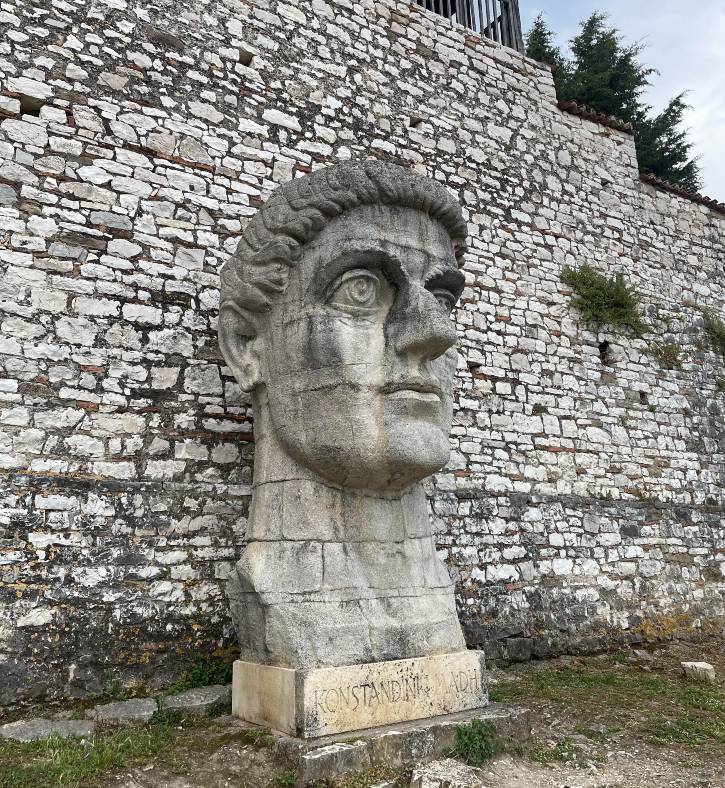
Later I asked for an explanation of the name from my hotel staff about the city’s nickname and received a good answer. ‘We don’t actually call it that. When books were written it perhaps got mistranslated, but there you go. Berat is in fact known as the city of one window upon another, or something equally logical and unromantic.”
So, it turns out that the moniker City of 1001 Windows, is a mistranslation from Albanian to English.
Another of Berat’s Ottoman-era attraction is its Medieval centre that houses a beautiful mosque, an ornate tekke, and stunning wood-carved balconies. Originlly built as the centre of Berat, this place suffered in the World War II – although few of the landmark buildings like the 14th century King Mosque, the Halveti Tekke, few tombs and intricate wooden balconies remain intact.
Gorica Bridge
The Gorica Bridge with its 7 arches finds its way into every photograph of Berat and is one of its top attractions. This old stone bridge links the neighborhoods of Mangalem and Gorica across the river. It was originally built from wood in 1780 and was rebuilt with stone in the 1920s and is easily one of the oldest and most popular Ottoman bridges in Albania. Like all things Albanian, it is not without its share of legends. This bridge is said to be haunted by the ghosts of a young mother who was sacrificed to appease the raging Osumi River. Another story goes that the original wooden bridge contained a dungeon in which a girl would be incarcerated and starved to appease the spirits responsible for the safety of the bridge.
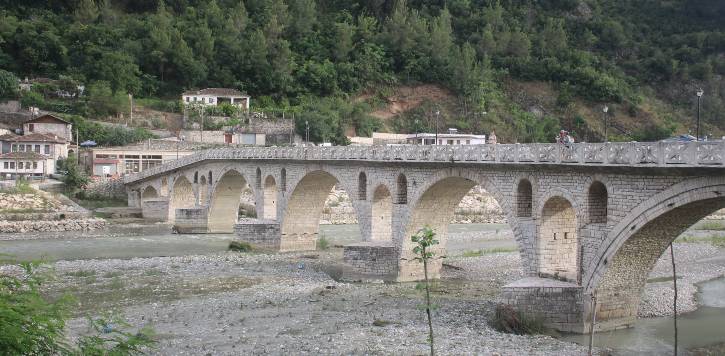
Indulge in Xhiro and Coffee
What I found endearing was the country’s two most favourite pastime, not limited to Berat. Drinking coffee and Xhiro. Simply explained, the latter is a tradition all over Albania and no one really knows how it started why it continues. However, in Albania, you will immediately become a part of it. Come sunset, everyone turns up on the streets for a walk (xhiro), going up and down, chatting up friends and acquaintance, grab an ice cream of sip coffee for hours. In Berat, these two activities can be combined at Boulevard Republika. The boulevard is car-free and lined with café on one side and a huge green buffer that runs between the river and the street. It is said that on an average, Albanians spend at least three hours over a cup of coffee. They believe that a conversation runs smoothly with a cup of coffee and a good friend.
This is one of the truly authentic experiences in Berat.


